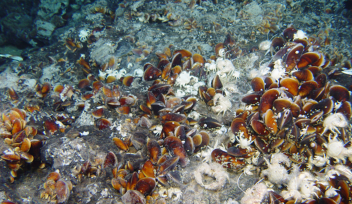Diagram of synaptic transmission

(1) A nerve impulse arrives. (2) This causes calcium ion channels to open, resulting in an influx of calcium ions in the terminal. (3) This causes synaptic vesicles to fuse with the terminal membrane, releasing neurotransmitter into the gap between neurons, known as the synaptic cleft. (4) The neurotransmitters bind to receptor sites on ion channels in the postsynaptic membrane, causing them to open. (5) Ions flow into the postsynaptic neuron, which generates an action potential when a threshold level is reached.
(1) A nerve impulse arrives. (2) This causes calcium ion channels to open, resulting in an influx of calcium ions in the terminal. (3) This causes synaptic vesicles to fuse with the terminal membrane, releasing neurotransmitter into the gap between neurons, known as the synaptic cleft. (4) The neurotransmitters bind to receptor sites on ion channels in the postsynaptic membrane, causing them to open. (5) Ions flow into the postsynaptic neuron, which generates an action potential when a threshold level is reached.
Copyright OIST (Okinawa Institute of Science and Technology Graduate University, 沖縄科学技術大学院大学). Creative Commons Attribution 4.0 International License (CC BY 4.0).
Tags














